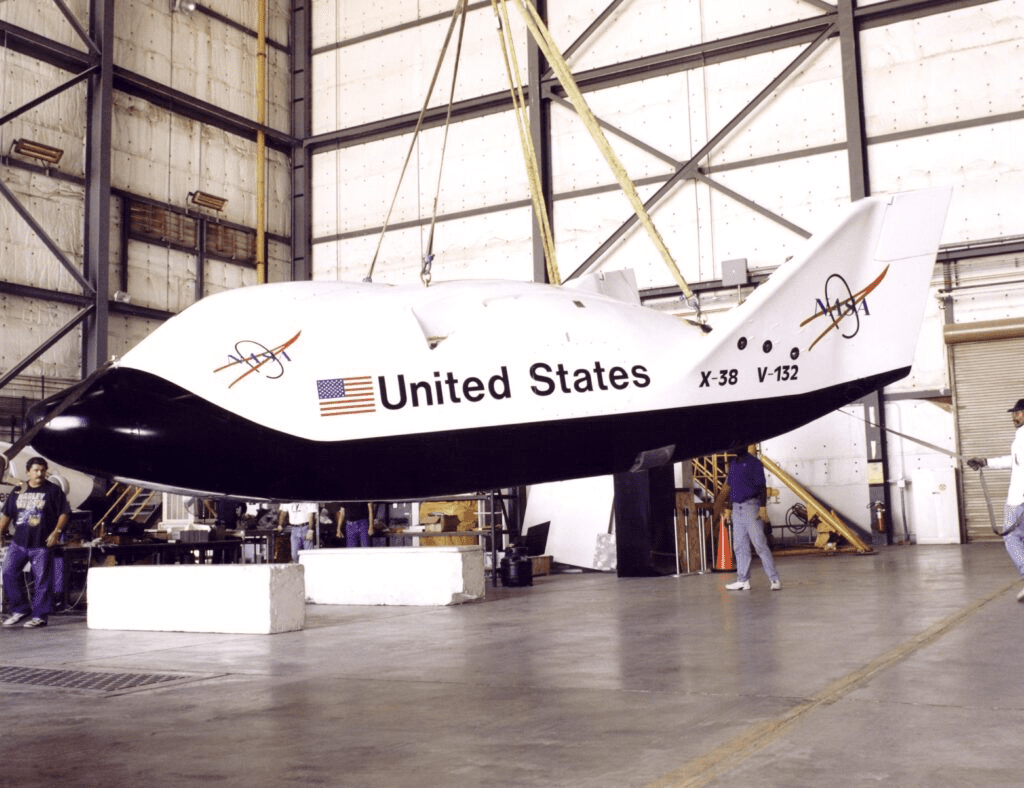If the X-38 crew return vehicle (CRV), with its wingless lifting body, had become operational, it would have emerged as the first reusable human spacecraft produced since the Space Shuttle. The X-38 was canceled, an unfortunate victim of NASA budget cuts. No reusable human spacecraft has been developed in the twenty years since the X-38’s cancellation.
Developing reusable spacecraft would have helped keep the costs of space exploration down. The monetary costs of space exploration have always been high. Developing new technologies and procedures for space exploration is expensive.
During the 1960s, a Space Race had commenced, and NASA had secured generous budgets. NASA’s budget hit an all-time high of 4.41 percent of federal spending in 1966. Eventually, Congress reduced NASA’s budget after the Soviet Union’s Space Race activities withered off.
By 1975, NASA was receiving less than one percent of all federal funding. Since then, NASA’s budget has only briefly exceeded one percent. The X-38 was initially designed to provide a swift escape for astronauts from the International Space Station (ISS) in emergencies. Previously, the astronauts were dependent on time-intensive methods to return to Earth from the ISS.
The Space Shuttle was used to ferry astronauts back to Earth, but it was complex and challenging to operate. The X-38 aimed to bypass the life-threatening logistics of relying on the Space Shuttle. The X-38 Crew Return Vehicle (CRV) was tasked with saving crew members aboard the ISS.
The X-38 project involved collaboration between different NASA centers and the European Space Agency. The X-38 had to overcome the challenges of building a custom human space rescue vehicle at a reduced cost. The project came in significantly under budget compared to the initial estimate.
Similar Post
The X-38 consisted of three crafts in one: a spacecraft, a lifting body, and a parafoil. The X-38 would dock with the ISS and autopilot the crew back to Earth using a deorbital propulsion system. After reentry, the X-38 would glide back to Earth using a steerable parafoil that could be manually controlled if necessary.
The X-38 was equipped with high-altitude low opening (HALO) parachutes for emergencies. The escape process from the ISS to landing was expected to take two to three hours.
The X-38 prototypes underwent successful atmospheric tests before the program was canceled due to budget cuts. The X-38 would have used a large, steerable parafoil for landing. Composite skin and electromechanical actuators for control were used in building the X-38, which is the first for any spacecraft. The X-38 program was ultimately scrapped, and the V132 prototype is now on display at a museum.

















